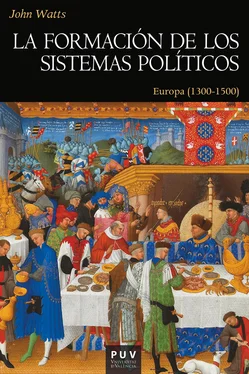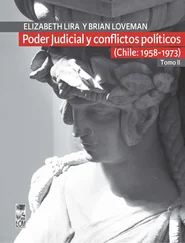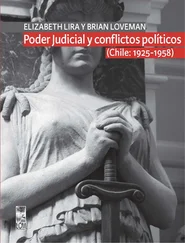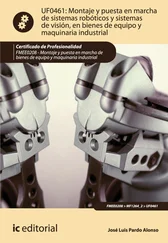37 N. Wright, Knights and Peasants: The Hundred Years War in the French Countryside (Woodbridge, 1998), caps. 2-3, y nota de la p. 126: «Hubo, sin duda, más lucha a realizar contra los enemigos públicos que en otras épocas de mayor orden, y las inseguridades vitales fueron más pronunciadas, pero los patrones familiares del señorío fueron patentes en todas partes».
38 A. Harding, The Law Courts of Medieval England (Londres, 1973), pp. 76-77; C. Carpenter, «Law, Justice and Landowners in Late Medieval England», Law and History Review , 1 (1983), pp. 205-237, pp. 207-209.
39 K. B. McFarlane, The Nobility of Later Medieval England (Oxford, 1973), p. 114.
40 La siguiente discusión se centra en las obras generales y comparativas sobre el estado bajomedieval, sin considerar la montaña de trabajos que exploran el crecimiento de los estados en países individuales. Se pueden encontrar en la bibliografía ejemplos de estos últimos, muchos de los cuales han ayudado a conformar las perspectivas críticas expresadas en este texto.
41 J. R. Strayer, On the Medieval Origins of the Modern State (Princeton, 1970). Para una aproximación continental, que también se centra en el periodo que va del año 900 al 1300, véase H. Mitteis, The State in the Middle Ages: A Comparative Constitutional History of Feudal Europe , traducción de H. F. Orton (Ámsterdam, 1975; 1.ª ed. 1940).
42 C. Tilly, The Formation of National States in Western Europe (Princeton, 1975), p. 42
43 G. L. Harriss, King, Parliament and Public Finance in Medieval England to 1369 (Oxford, 1975) y Shaping the Nation: England, 1360-1461 (Oxford, 2005).
44 Kaeuper, War, Justice and Public Order. Véase también lo que hemos indicado anteriormente, en la p. 36.
45 J.-Ph. Genet, «L’État moderne: un modèle opératoire», en Genet (ed.), L’État moderne: genèse (París, 1990), 261-281; también «Which State Rises?», Historical Research , 65 (1992), pp. 119-133.
46 W. P. Blockmans, «Voracious States and Obstructing Cities: An Aspect of State Formation in Pre-Industrial Europe», en C. Tilly y W. P. Blockmans (eds.), Cities and the Rise of States in Europe, A.D. 1000 to 1800 (Boulder, 1994), cap. 11; también A History of Power in Europe: Peoples, Markets, States (Amberes, 1997).
47 J. R. Strayer, «Philip the Fair - A “Constitutional” King?», American Historical Review , 62 (1956), pp. 18-32; Genet, «L’État moderne», p. 278.
48 Tilly, Formation of National States , p. 6. Estos temas, en cualquier caso, se tratan en uno de los volúmenes de la European Science Foundation: A. Padoa-Schioppa (ed.), Legislation and Justice (Oxford, 1997).
49 Véanse, por ejemplo, H. Spruyt, The Sovereign State and its Competitors. An Analysis of System Change (Princeton, 1994); C. Tilly, «Entanglements of European Cities and States», en Tilly y Blockmans (eds.), Cities and the Rise of States , cap. 1 (p. 6 para la «transformación»); G. Chittolini, «The “Private”, the “Public”, the State», en J. Kirshner (ed.), The Origins of the State in Italy, 1300-1600 (Chicago, 1995); T. Ertman, Birth of the Leviathan: Building States and Regimes in Medieval and Early Modern Europe (Cambridge, 1997); C. Tilly, Regimes and Repertoires (Chicago, 2006).
50 S. Reynolds, Kingdoms and Communities in Western Europe, 900-1300 , 2.ª ed. (Oxford, 1997), p. 254. [ N. del t. : En la presente traducción hemos adaptado al castellano el adjetivo inglés regnal , un útil neologismo historiográfico creado por Susan Reynolds, que utilizaremos entrecomillado como «regnal». Véase una mayor explicación de la cuestión más adelante, en las pp. 87 y 403-404].
51 Genet, «L’État moderne», p. 268.
52 R. W. Southern, Western Society and the Church , cap. 1. Los tratamientos clásicos sobre los aspectos espirituales y mágicos de la monarquía son, respectivamente, los de E. H. Kantorowicz, The King’s Two Bodies (Princeton, 1957) y M. Bloch, The Royal Touch , traducción de J. E. Anderson (Londres, 1973).
53 Sin embargo, Bizancio y los otomanos son tratados en las tres obras.
54 Véase más escepticismo sobre los estados en Rees Davies, «The Medieval State: The Tyranny of a Concept», Journal of Historical Sociology , 16 (2003), pp. 280-300.
55 Véase, más adelante, la p. 150.
56 H. A. Oberman, «Fourteenth-Century Religious Thought: A Premature Profile», Speculum , 53 (1978), pp. 80-93, y más adelante, pp. 150-151.
57 P. Burke, History and Social Theory , 2.ª ed. (Cambridge, 2005), pp. 127-140, ofrece una introducción.
58 Véanse Land and Lordship: Structures of Governance in Medieval Austria , traducción con una introducción de H. Kaminsky e introducción de J. Van Horn Melton (Filadelfia, 1992), y B. Arnold, «Structures of Medieval Governance and the Thought-World of Otto Brunner», Reading Medieval Studies , 20 (1994), pp. 3-12.
59 S. D. White, «Tenth-Century Courts at Mâcon and the Perils of Structuralist History: Re-reading Burgundian Judicial Institutions», en W. C. Brown y P. Górecki (eds.), Conflict in Medieval Europe: Changing Perspectives on Society and Culture (Aldershot, 2003), pp. 37-68.
60 Reynolds, Kingdoms and Communities , p. 248.
61 F. Braudel, The Mediterranean and the Mediterranean World in the Age of Philip II , traducción de S. Reynolds, 2 vols. (Londres, 1972-1973), vol. II, p. 678. Sobre la creciente preocupación entre la Escuela de Annales de la década de 1960 y 1970 por haber descuidado la historia política, véase T. Stoianovich, French Historical Method: The Annales Paradigm (Ithaca, Nueva York, 1976), pp. 91-95.
62 Reinhard, Power Elites , pp. 4-18. Jacques Le Goff realizó una sugerencia similar en su ensayo de 1967 sobre la historia política: «Is Politics still the Backbone of History?», traducción de B. Bray, en F. Gilbert y S. Graubard (eds.), Historical Studies Today (Nueva York, 1971), pp. 337-355 y 347 en particular.
63 R. Bartlett, The Making of Europe: Conquest, Colonization and Cultural Change, 950-1350 (Londres, 1993); R. W. Southern, The Making of the Middle Ages (Londres, 1953).
64 La expresión de R. W. Southern en Western Society and the Church , p. 34.
Конец ознакомительного фрагмента.
Текст предоставлен ООО «ЛитРес».
Прочитайте эту книгу целиком, купив полную легальную версию на ЛитРес.
Безопасно оплатить книгу можно банковской картой Visa, MasterCard, Maestro, со счета мобильного телефона, с платежного терминала, в салоне МТС или Связной, через PayPal, WebMoney, Яндекс.Деньги, QIWI Кошелек, бонусными картами или другим удобным Вам способом.












